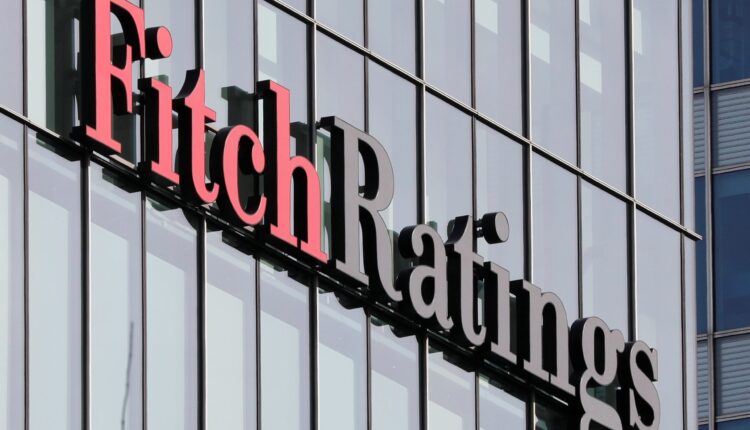Fitch Ratings has affirmed Bank of Africa’s (BOA) Long-Term Foreign- and Local-Currency Issuer Default Ratings (IDRs) at ‘BB’ with Stable Outlooks.
Fitch has also affirmed BOA’s Viability Rating (VR) at ‘bb-‘ and National Long-Term Rating at ‘AA-(mar)’ with a Stable Outlook.
BOA’s IDRs are driven by potential support from the Moroccan authorities, as reflected in the bank’s Government Support Rating (GSR) of ‘bb’. The Stable Outlook mirrors that on the sovereign rating. BOA’s VR considers its solid franchise in Morocco and its pan-African presence, which brings diversification benefits to the business model but also exposes it to less developed markets and more volatile operating conditions. BOA’s stronger performance and fairly strong funding and liquidity are balanced by weak capital and asset quality.
BOA’s National Ratings are two notches below Attijariwafa Bank and three notches below the subsidiaries of large French banking groups; the latter benefit from potential support from their foreign shareholders.
BOA’s GSR of ‘bb’ considers the bank’s systemic importance as the third-largest Moroccan bank – but also the limitations of the sovereign’s financial flexibility. Fitch views BOA as a domestic systemically important bank (D-SIB) in Morocco based on its 14% market share of loans and deposits.
Stable Operating Environment Outlook: We forecast Morocco’s real GDP to grow 3.2% in 2024 and 3.3% in 2025. However, growth remains vulnerable to a slowdown in the euro zone, Morocco’s main trading partner, and to adverse weather conditions and high inflation.
Solid Franchise in Morocco: BOA has a solid franchise and D-SIB status in its home market (which accounted for 70% of total assets at end-1H23), with a 14% market share. BOA operates across 32 countries, mostly in Africa, with net income from operations outside Morocco representing 50% of consolidated net income in 1H23, well above D-SIB domestic peers’.
Moderate Risk Profile
The risk profile has improved with a greater harmonisation in risk controls across the group, a cautious approach to growth in recent years in a drive to preserve capital, as well as several rounds of capital increases, including rights issues. The bank’s loan book is less concentrated than the peer average; the largest 20 exposures were 14.5% of total gross loans end-1H23.
BOA’s Stage 3 loans ratio (end-1H23: 9.9%) is higher than at other major Moroccan banks, which is partially driven by higher impairments at its African subsidiaries. Stage 2 loans are high at 8.1% of gross loans, although roughly in line with the peer average of 9%. Reserve coverage of Stage 3 loans by total allowances (85%) is reasonable.
BOA’s operating profit improved to 2.0% of risk-weighted assets (RWAs) in 1H23 (2022: 1.6%) owing to strong fees and commissions income as well as net interest income, and is broadly in line with the sector average.
BOA’s cost efficiency has improved but remains weaker than peers’ primarily due to its foreign operations. In 9M23, net income was up 17% yoy, primarily due to a solid 18% growth in net fees and commissions and 10% growth in net interest income.
BOA’s common equity Tier 1 (CET1) ratio of 8.7% at end-1H23 was lower than the sector average (10%) and is managed tightly against its 8% minimum regulatory requirement. Its total capital adequacy ratio (CAR) of 12% at end-1H23 was just in line with its minimum regulatory requirement.
BOA is primarily funded by stable customer deposits (end-3Q23: 68% of non-equity funding) and deposit concentration is low by African standards. Liquidity is adequate, with a 92% loans/deposits ratio at end-3Q23 and a 135% liquidity coverage ratio at end-1H23.
BOA’s Long-Term Foreign-Currency IDR (xgs) is at the level of the VR. Its Long-Term Local-Currency IDR (xgs) is in line with its Long-Term Foreign-Currency IDR (xgs).
Its Short-Term Foreign-Currency IDR (xgs) is in accordance with its Long-Term Foreign-Currency IDR (xgs) and Fitch’s short-term rating mapping. Its Short-Term Local-Currency IDR (xgs) is in accordance with its Long-Term Local-Currency IDR (xgs) and Fitch’s short-term rating mapping.


Comments are closed.